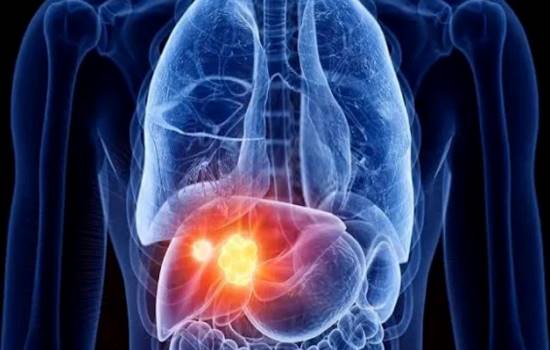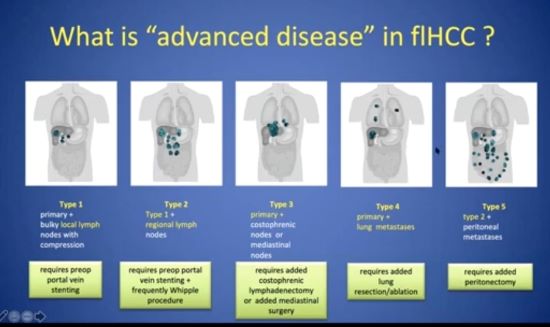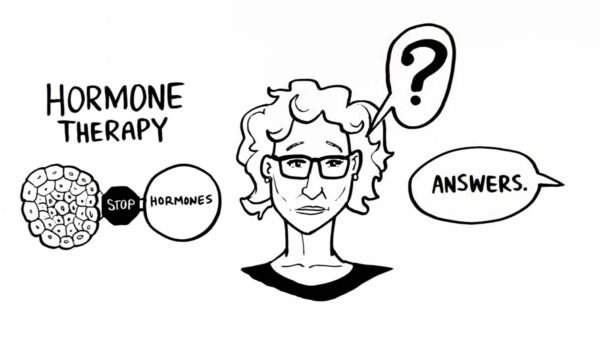Cancer is one of the most ruthless illness in today’s and there is not a certain treatment methods although all scientific developments. But one of the cancer types is different from others. Because it can be seen without any symptoms and at an early age. This type of cancer is called fibrolamellar hepatocellular carcinoma.
What is Fibrolamellar Hepatocellular Carcinoma ?
Fibrolamellar hepatocellular carcinoma (FHL) is a rare type of liver cancer that typically occurs in individuals without underlying liver disease or cirrhosis. It is characterized by the presence of fibrous tissue and abnormal cell growth in the liver, and is most commonly found in young adults. Symptoms of FHL can include abdominal pain, weight loss and jaundice.


What is Symptoms Fibrolamellar Hepatocellular Carcinoma ?
Symptoms of Fibrolamellar Hepatocellular Carcinoma (FHL):
- Abdominal pain, usually located in the upper right side of the abdomen
- Weight loss
- Jaundice (yellowing of the skin and whites of the eyes)
- Fatigue
- Nausea
- Loss of appetite
- Abdominal swelling (ascites)
- Enlarged liver or spleen
- Itchy skin
- Bruising or bleeding easily
However, it is important to note that FHL is a rare subtype of liver cancer and the symptoms may change and not all the patients may experience all the symptoms. If you suspect that you or someone you know may have FHL or any other liver disease, it is important to see a doctor for an evaluation and diagnosis.
What is Causes of Fibrolamellar Carcinoma ?
The exact cause of Fibrolamellar Carcinoma (FHL) is not well understood. Some studies suggest that FHL may be caused by genetic mutations, such as a mutation in the PRKAR1A gene, which is involved in cell growth and division. However, this is not found in all cases of FHL, and more research is needed to fully understand the causes of this rare subtype of liver cancer.
Risk factors for FHL are not known and most of the patients with FHL have no known risk factors. However, a few cases have been reported in association with exposure to certain chemicals, such as aniline dyes, chlorinated solvents and polychlorinated biphenyls (PCBs).
What is Treatment Options Fibrolamellar Hepatocellular Carcinoma ?
Treatment options for Fibrolamellar Hepatocellular Carcinoma (FHL) :
- Surgery: Surgery to remove the tumor along with a margin of surrounding healthy tissue, is the primary treatment for FHL. This is usually done through a liver resection, which is a procedure to remove part of the liver.
- Radiation Therapy: This treatment method uses high-energy X-rays or other particles to kill cancer cells. It may be used in combination with surgery or as a palliative treatment to relieve symptoms.
- Chemotherapy: This treatment way uses drugs for kill cancer cells. It may be used in combination with surgery or radiation therapy or as a palliative treatment to relieve symptoms.
- Targeted Therapy: This treatment uses drugs that target specific molecules that help cancer cells grow and survive. It may be used in combination with surgery, radiation therapy or chemotherapy. These drugs work by blocking the growth and spread of cancer cells while minimizing harm to healthy cells. Currently, there are no FDA-approved targeted therapies specifically for FHL. However, some studies are looking at drugs that target specific molecules such as:
- Vascular endothelial growth factor (VEGF): This protein helps cancer cells form new blood vessels and is involved in the growth and spread of cancer cells. Drugs that target VEGF, such as bevacizumab, have been studied in combination with chemotherapy for FHL.
- Mammalian target of rapamycin (mTOR): This protein is involved in cell growth, proliferation and survival. Drugs that target mTOR, such as everolimus, have been studied in combination with chemotherapy for FHL.
- Platelet-derived growth factor receptor (PDGFR): This protein is involved in cell growth and survival. Drugs that target PDGFR, such as imatinib, have been studied in combination with chemotherapy for FHL.
- It’s important to note that these targeted therapies are still in the research phase and more studies are needed to understand their effectiveness and safety for treating FHL. Also, these drugs may have side effects and it’s important to discuss the benefits and risks with your doctor before starting any treatment.
- Liver Transplantation: This option may be considered for patients with FHL who are not candidates for surgery, have advanced disease or have recurrence after initial therapy.
Treatment plan for FHL will depend on the patient’s overall health and immune system condition, stage and size of the tumor and the patient’s preferences. It’s important to consult with a team of specialists, including a liver surgeon, radiation oncologist and medical oncologist, to determine the best treatment plan before final decision.
You can find more info about liver cancer below page :
It’s also important to know that FHL is a rare disease and the understanding of its treatment is limited. The treatment options are based on the limited evidence and clinical experience and new research may lead to new treatments in the future.
What is Fibrolamellar Hepatocellular Carcinoma Radiology ?
Radiology plays a vital role in the diagnosis and management of FHL. Imaging studies such as ultrasonography, computed tomography (CT) and magnetic resonance imaging (MRI) are used to evaluate the size, location and characteristics of the tumor, as well as to assess the surrounding liver tissue and adjacent organs. Ultrasound typically demonstrates a well-defined, solid, hypoechoic mass with posterior enhancement, whereas CT and MRI typically show a well-circumscribed, heterogeneous mass with central necrosis and peripheral enhancement on contrast-enhanced images. The imaging characteristics of FHL are not always specific, therefore a biopsy is needed to confirm the diagnosis.
Imaging also plays an important role in the follow-up and monitoring of patients with FHL after treatment, as it can help detect recurrence or new tumors at an early stage. Radiology also helps to plan the surgical resection and to evaluate the response to therapy and the potential complications. It’s important to note that radiology is just one aspect of the diagnosis and management of FHL, and the interpretation of the imaging studies should always be done in conjunction with the patient’s clinical history and laboratory results.
Is Fibrolamellar Hepatocellular Carcinoma Treatable?
Treatment of FHL is based on limited evidence and clinical experience and new research may lead to new treatments in the future. Surgery is the primary treatment for FHL, with the goal of removing the tumor along with a margin of surrounding healthy tissue. Surgery can be curative if all the tumor is removed, however, FHL can be difficult to completely resect due to its size and location.
Radiation therapy and chemotherapy are also options for FHL. They may be used in combination with surgery or as a palliative treatment to relieve symptoms. Targeted therapy, which uses drugs that target specific molecules that help cancer cells grow and survive, may also be used in combination with surgery, radiation therapy or chemotherapy.
Liver transplantation may also be considered for patients with FHL who are not candidates for surgery, have advanced disease or have recurrence after initial therapy.
What is Fibrolamellar Hepatocellular Carcinoma Survival Rate ?
Survival rate for Fibrolamellar Hepatocellular Carcinoma (FHL) is generally poor, with a median survival of 2-3 years. However, survival can change depending on the stage of the cancer at diagnosis, the patient’s overall health and the type of treatment received.
Survival rates are usually given as a percentage and are based on the number of people who survive a certain amount of time after a diagnosis. However, it’s important to keep in mind that these statistics are based on large groups of people and may not apply to an individual patient.
A study of patients with FHL who underwent liver resection, the 5-year survival rate was 75% and the 10-year survival rate was 45%. In another study of patients who received transplantation, the 5-year survival rate was 85% and the 10-year survival rate was 70%.
It’s important to know that FHL is a rare disease and the understanding of its survival rate is limited. The survival rate may change depending on the population studied, treatment options and stage of the disease at the time of diagnosis. It’s always important to consult with your doctor for more information and professional advice.



Tips and Advices For FHL Patients :
Here are some general tips that may be helpful for individuals with Fibrolamellar Hepatocellular Carcinoma (FHL):
- Get a Second Opinion: It’s important to consult with a team of specialists, including a liver surgeon, radiation oncologist and medical oncologist to determine the best treatment plan and to discuss the potential benefits and risks of each option.
- Follow Your Treatment Plan: If you have been diagnosed with FHL, it’s important to follow your treatment plan as directed by your healthcare team.
- Take Care of Yourself: FHL can be a challenging disease to manage, so it’s important to take care of your physical and mental well-being. Eating a healthy diet, getting regular exercise and managing stress can help you feel better and stay strong.
- Communicate With Your Healthcare Team: It’s important to keep your healthcare team informed of any changes in your health or any side effects you may be experiencing as a result of your treatment.
- Join a Support Group: Joining a support group can provide you with valuable information, as well as emotional support and encouragement.
- Stay Informed: It’s important to stay informed about the latest research and treatments for FHL.
Last words from writer : You are very strong, beauty, kind and cheerful person. Me and everyone who know you are believing you are unique. I will pray for you and when you overcome please send me e-mail.

